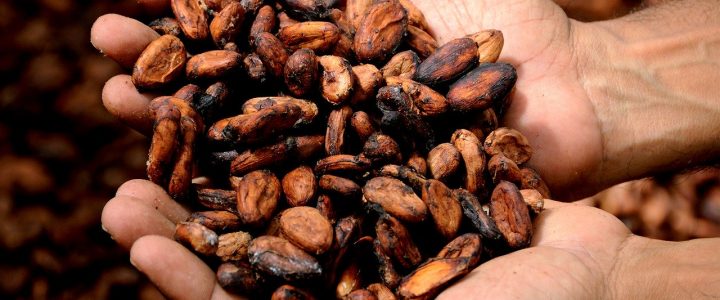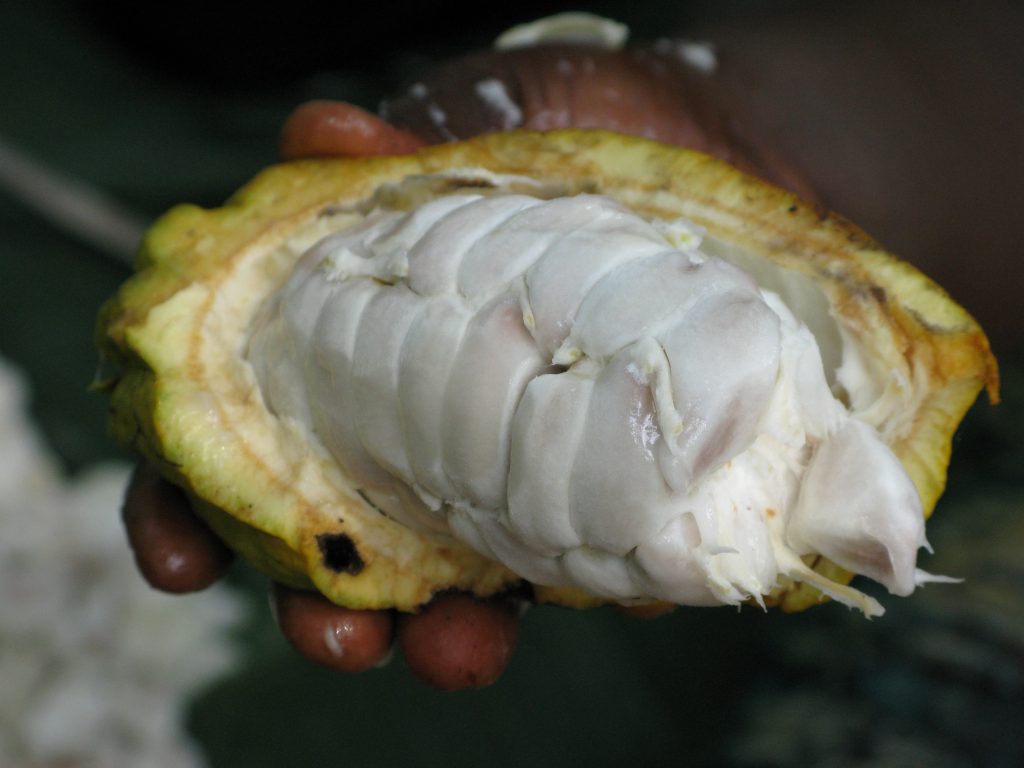
Globally, we consume 7.2 million metric tons and almost 90 billion dollars’ worth of chocolate every year. This delicious food’s history dates all the way back to 450 BC and the Aztec Empire, and had so many new types launched in 2008 that an average of one new product was brought to market every hour!
Origins
The origin of chocolate goes back to Southern Mexico, where more than 2000 years ago, it started out as a bitter beverage consumed by early Mesoamericans. Thought by the Aztecs to be a gift from the god of wisdom, cacao seeds were once so valuable they were even used as a form of currency.
But it wasn’t until chocolate was brought back to Europe in the 16th century that sugar was added, chocolate as we know it was born, and the New World craze for the confection began.
Today, roughly two-thirds of the world’s cocoa – the main ingredient needed to make chocolate – is produced in Western Africa, with Ivory Coast being the largest source, producing a total crop of 1.4 million tons. Ghana, Nigeria, Cameroon, Indonesia, Peru, Ecuador, Brazil, Mexico, and the Dominican Republic are among the other top chocolate producing countries in the world.

But, unfortunately, not all chocolate is created equal. And there are some very serious sustainability issues to consider when indulging your sweet tooth, for the Earth as well for the humans involved in chocolate production.
Production

The cocoa we use to produce chocolate originates from the seeds of the cocoa fruit which grow on cocoa trees in the hot and humid tropical regions around the Equator. Each cocoa pod contains on average 40 seeds and each tree produces 20-30 pods per year. It takes a whole year’s crop from one tree to make just one pound of cocoa.

Despite producing most of the world’s cocoa, Africans only account for 3.28% of the chocolate that is consumed annually.
Cocoa trees themselves are actually quite delicate and in need of constant attention year-round, as the pods do not ripen at the same time and are easily susceptible to weather changes, disease, and pests. Because of the hazards of disease and pests, most of the world’s cacao is grown and harvested by hand on small labor-intensive farms of less than five acres, instead of large plantations through which these hazards can rapidly spread. However, even with the protection of their small isolated farms, cocoa growers frequently experience losses ranging from 30 to 100 percent of their crops.
Sustainability Considerations
Cocoa trees only produce fruit for on average 25 years after which the trees need to be replanted. Farmers often cannot afford to invest in the maintenance of existing trees or in planting new trees on their plantations. Instead of replacing old and diseased cocoa trees, they use new farmland for cocoa – at the expense of sustainable, ecological and diversified farming. Rainforest land is most often at jeopardy of being clear cut to make way for production.
Cocoa has received less attention as a driver of deforestation than palm oil, soy, beef, or wood products. Compared to these “big four”, cocoa has a relatively small global deforestation footprint, but its impact is significant in the unique biodiversity hotspots where it can be grown.
Did you know that, typically, less than 7% of the price of your chocolate bar goes to cocoa producers? Or that according to the US Department of Labor, more than 2 million children in Ghana and Ivory Coast work in hazardous conditions growing cocoa? Children are used as slaves or in debt bondage, trafficked between countries, and forced to do hazardous work, which includes using dangerous machinery or tools, transporting heavy loads, and handling pesticides.

The vast majority of cocoa produced each year come from small farms in West Africa, where farmers and their children live on less than $1 per day. Without the resources to hire and pay workers a living wage, children are more often than not forced to work at the expense of safety and education.
0.0075%.
That’s the amount of the $1 trillion in profits in the last 15 years that the chocolate industry has put back into improving working conditions for cocoa laborers in Western Africa.
And while the many of the major chocolate producers of the world have been called to accountability in recent years and set in motion plans to provide farmer training, community support, and farm development to improve sustainability, there hasn’t yet been much improvement.
So, what can you do?
Check your labels and buy your chocolate from certified companies that have promised sustainable practices for the planet and the workers. Certification provides for a relatively higher standard of living, contributes to the protection of the environment and the climate and will lead to more transparency in the value chain of cocoa and chocolate. The certification organizations Fairtrade, Rainforest Alliance, and UTZ have independent control systems to ensure compliance with social, economic and environmental standards.

And check out Green America’s Chocolate Scorecard. Most of the major chocolate companies we know and love, score no better than a C+. Promises have been made, but in the meantime, skip ‘em and opt for a brand that gets an A.
It might cost a little more to satisfy your craving, but knowing your chocolate was sourced sustainably, responsibly, and ethically is worth its weight in, well, cocoa beans.



